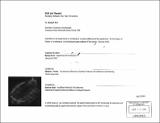| dc.contributor.advisor | William L. Porter. | en_US |
| dc.contributor.author | Lee, Kyung-A, 1972- | en_US |
| dc.contributor.other | Massachusetts Institute of Technology. Dept. of Architecture. | en_US |
| dc.date.accessioned | 2012-01-12T19:22:41Z | |
| dc.date.available | 2012-01-12T19:22:41Z | |
| dc.date.copyright | 2002 | en_US |
| dc.date.issued | 2002 | en_US |
| dc.identifier.uri | http://hdl.handle.net/1721.1/68379 | |
| dc.description | Thesis (M.Arch.)--Massachusetts Institute of Technology, Dept. of Architecture, 2002. | en_US |
| dc.description | Includes bibliographical references (p. 66-68). | en_US |
| dc.description.abstract | At present, most cities confront similar issues that result from mass production, individualism, automobile-dependency and the advancement of democratic ownership. These issues have pushed our cities in a somewhat undesirable direction. Self-addressing buildings are everywhere disguised in a distorted framework of aesthetic knowledge. They are uncommunicative both to nature and their surroundings. This is the predominant feature of current cities. Considering the aforementioned issues, this thesis proposes a building that defines an edge of architecture by the various void structures it faces. Unlike the design method based on a particular program and solid dimensions of an object, it focuses primarily on the outer forces of the site, which is called 'void structures' . Void structures can be divided into three categories: Void structure in nature, void structure in human settlement, and the movement pattern of people. These undefined formal relationships between the void structures - the void created by the topography, human settlement, movement pattern of people and architectural elements - are the major consideration in defining architectural configuration. By relating these voids, physical and psychological boundaries are eliminated, and the architecture becomes the connector between nature and people. Architectural investigation of this thesis is divided into four elements: First, the earth is perfected by seeking a proper foundation. Second, formation of water body is sought as a means of connection to a natural void. Third , the roof is manipulated to turn an ecological void into a spatial void to produce aesthetic pleasure. Fourth, openings are studied to strengthen the relationship between void structures. | en_US |
| dc.description.statementofresponsibility | by Kyung-A Lee. | en_US |
| dc.format.extent | 70 p. | en_US |
| dc.language.iso | eng | en_US |
| dc.publisher | Massachusetts Institute of Technology | en_US |
| dc.rights | M.I.T. theses are protected by
copyright. They may be viewed from this source for any purpose, but
reproduction or distribution in any format is prohibited without written
permission. See provided URL for inquiries about permission. | en_US |
| dc.rights.uri | http://dspace.mit.edu/handle/1721.1/7582 | en_US |
| dc.subject | Architecture. | en_US |
| dc.title | Void and beyond : reading between the void structures | en_US |
| dc.type | Thesis | en_US |
| dc.description.degree | M.Arch. | en_US |
| dc.contributor.department | Massachusetts Institute of Technology. Department of Architecture | |
| dc.identifier.oclc | 50531170 | en_US |
